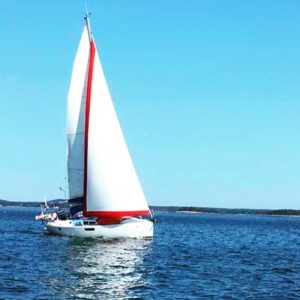 If you read the message boards long enough you’ll no doubt read a horror story about Coast Guard Documentation. Some will complain about paying more money than necessary by using a website that looks like the Coast Guard’s website, and other’s will complain about the long processing times it takes to receive the documentation. Well, both are right. There are a lot of services trying to sell their expertise to help you get a boat documented, and the National Vessel Documentation Center (NVIC) is notoriously behind in processing paperwork. As a career Coast Guard Officer that worked in compliance (never at the NVDC) and owner of a documented boat, I’m going to try and offer some insight into the NVDC, and help you decide if you should go it your own or pay a third party for their expertise in dealing with the NVDC.
If you read the message boards long enough you’ll no doubt read a horror story about Coast Guard Documentation. Some will complain about paying more money than necessary by using a website that looks like the Coast Guard’s website, and other’s will complain about the long processing times it takes to receive the documentation. Well, both are right. There are a lot of services trying to sell their expertise to help you get a boat documented, and the National Vessel Documentation Center (NVIC) is notoriously behind in processing paperwork. As a career Coast Guard Officer that worked in compliance (never at the NVDC) and owner of a documented boat, I’m going to try and offer some insight into the NVDC, and help you decide if you should go it your own or pay a third party for their expertise in dealing with the NVDC.
What is a Coast Guard Documented Boat and does your boat need it?
Coast Guard Documentation is a federal form of registration that proves the nationality of a vessel. The NVDC website has a FAQ section, and has this to say about it:
Vessel documentation is a national form of registration. It is one of the oldest functions of Government, dating back to the 11th Act of the First Congress. Documentation provides conclusive evidence of nationality for international purposes, provides for unhindered commerce between the states, and admits vessels to certain restricted trades, such as coastwise trade and the fisheries. Since 1920, vessel financing has been enhanced through the availability of preferred mortgages on documented vessels.
A vessel that registers at least 5 net tons is eligible for documentation. If you are wondering if you vessel measures 5 net tons don’t put it in a sling with a load cell, because tonnage used in Coast Guard measurements isn’t weight at all. Tonnage is actually a measure of volume as it relates to cargo carrying capacity. So if you want to truly understand tonnage, you can read the tonnage guide here, written by my friend and colleague Pete Eareckson. It gets complicated quickly, so there is a simplified tonnage measurement form that is relatively straight forward (here). Alternatively, a quick google search will typically put you in the ballpark. In reality, any cruising boat will be over 5 net tons, and thus eligible for CG Documentation.
What is the National Vessel Documentation Center and what do they do?
The NVDC’s primary mission is to maintain a registry of U.S. vessels. They are located near Martinsburg, WV, and maintain a website with information at:
If you are registering a vessel for the first time, you can refer to their Instructions and Forms tab, where you’ll be able to access an instruction document. The instructions will list several forms needed for submission. It isn’t hard, but it takes time to read through each form. They also have a FAQ section that has some good information to read.
Buying Serendipity
We bought a foreign vessel. Serendipity was British Registered yacht, so if you’ve ever seen a not for sale to U.S. residents while in U.S. waters disclaimer on a yachtworld listing, that was us. We managed to execute this transaction privately, with only a notary for a bill of sale, and I believe we did it legally. First, we saw the vessel in the Bahamas, and agreed on a purchase agreement during this trip. The current owner landed in the U.S. and contacted Customs to pay import duties. After this step, we professionally survey the vessel and ultimately signed the bill of sale and executed a wire transfer. I submitted the documentation request in August, and while it took the NVDC six months, we received a Certificate of Documentation in February.
The only issue we encountered was my fault. Turns out the seller dated the document incorrectly, and it was dated one day before the notary dated it. It was an honest mistake as I was present with the seller and notary at the time of signing. We submitted the paperwork in August and notified of the mistake in November. We corrected it and received the COD in February. It was a bit stressful, as we didn’t have the experience of a third party to ensure we were doing it correctly, but in the end it worked out fine and we saved several hundred dollars.
I believe if you take the time to become familiar with their website, it is something you can do alone and put the saved dollars into something more tangible, like bottom paint – blog post coming soon!



